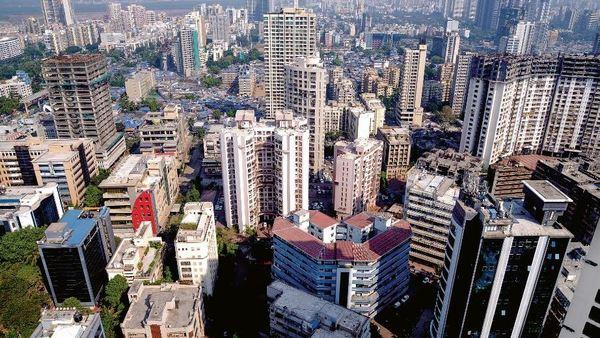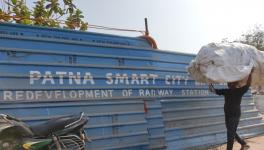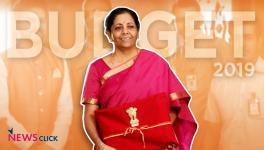Why Indian Cities Are Drifting Away from Sustainable Development Goals

Image for representational use only.Image Courtesy : Livemint
The fiscal crisis of 2008 struck deep wounds into the Indian economic system. It shook the pillars of the world’s capitalist systems. The sustainability of such a socio-economic construct became a challenge. Compounding this was the environmental crisis and the challenge to the sustainability of the planet itself—both of which continue to pose serious challenges.
Carbon emissions, if not checked, will become disastrous to the ecosystem. Sustaining the five Ps—people, planet, prosperity, peace and partnership were conceived as goals, with well-defined specific targets, under the sustainable development goals (SDGs) set in 2015.
Seventeen SDGs and 169 targets were announced to mitigate the crises of economic disparity and environmental degradation.
Soon after the adoption of the SDGs, world leaders met in Quito at Habitat III (United Nations Conference on Housing and Sustainable Urban Development), where the question of sustainability came to the fore once again, and the role of cities in mitigating challenges was discussed thoroughly. John Closs, the then executive director of Habitat, cried himself hoarse reminding participants that “business as usual, will not help in ameliorating the problems and we have to go back to the basics”.
Closs quite vociferously pointed out that three decades of laissez-faire showed that the model of city development that prevailed was completely unsustainable and that one had to go back to the basics of planning. What did he mean by that? More on that later.
Almost five years after the SDGs were adopted, there is just a decade left to achieve its set targets. It would be prudent to take a cursory look at some of the developments and if they will lead to desired results. Poring into all the 17 SDGs will be cumbersome, so we will rather focus on those linked to the urban world.
For the first ‘P’, i.e., the people, the desired outcome was to end poverty, hunger and allow people to live with dignity. Not to go into minutiae, but the latest Oxfam report released at the World Economic Forum in early 2020 exhibits how far we are from achieving desired results of ameliorating poverty. To point out just five highlights from the report:
-
The world’s richest 1% have twice as much wealth as 6.9 billion people and recently, the divide has grown wider.
-
The world’s richest 22 men have more wealth than all the women in Africa
-
Women and girls put in 12.5 billion hours of unpaid work everyday.
-
The value of unpaid work for women is at $10.8 trillion a year
-
Taxing the additional wealth of 0.5% of the richest 1% over the next 10 years is equal to investments needed to create 117 million jobs in education, health and elderly care.
Governments around the world have to intervene to save the interests of women, children, youth and its people and not just allow the laissez-faire economy to further accentuate the widening gap.
THE INDIAN STORY
The Indian government, also a signatory to the SDGs and to the UN-Habitat III has released a report on the index of SDGs in India. Along with the goals and targets, the Government has added 306 national indicators to measure and keep a tab on SDGs in the country. In the Niti Aayog’s report on SDGs, Kerala and Himachal Pradesh ranked in the top two positions. However, this did not happen because of any recent active intervention by the Indian government, but rather the results account for the basic structure of planning that has existed in both these states for long and in which emphasis was laid on social infrastructure.
Urban India has had an important role to play in the achievement of SDGs. In fact, the policy paradigm in urban India over the last three decades and especially since 2014, after the new government took over, is to bring a paradigm shift in urbanisation.
In simple terms, this shift seeks to change the nature of urbanisation, from “cities being left to mere managers to cites turned into entrepreneurs”. This has led to a situation where cities are turned into tools and instruments to attract investments and be more competitive. There are various ways to do it, and one of them is to monetise land and hand over urban commons, or the property of the people in the cities, to private players. This is done to make the city an attractive place for the investment of capital.
The Smart City Mission and the idea of 100 smart cities, which are supposed to be lighthouses of urbanisation and urban governance are conceived and designed in this manner. The plan is for area-based development which ensures that a particular area attracts a large chunk of investments. The area or patch of land in question could even be a part of urban commons. The not-so-distant past has shown that nearly 90% of the smart city plans have gone for redevelopment projects which cover just a small portion of the city. This has further accentuated urban poverty in Indian cities.
Instead of focussing on a more active role for the state and its intervention, the present model aims to allow further privatisation of cities. This is complemented by a ‘privatised urban governance model’, i.e. the model of special purpose vehicles (SPVs). The SPVs are formed in “smart” cities, which have taken over urban governance from the city councils to a private company model, in which there is hardly any representation of the politically-elected representatives of the cities. This model of urban governance is highly exclusionary and is being strongly objected to by the elected councils in the cities.
So, Indian cities present a contradictory development trajectory after the 74th Constitutional Amendment (Nagarpalika Act) which entails regular elections in cities while the real governance is either with parastatals or in the company format management—the SPVs. This model has further alienated the people and further widened the inequity gap, instead of mitigating challenges that urban poverty brings.
Inequity in urban India has increased manifold in recent times. In some cities, real estate has become the primary form of capital accumulation. The privatisation of utilities has led to massive expropriation of wealth in the country. It is no wonder that just 63 Indians have wealth equivalent to the entire budget of the federal Indian government.
Instead of taxing the wealthy, the government continues to provide tax benefits to the rich and expropriate from the poor. This is a highly unsustainable model. Similarly, the housing challenge continues to grow. Against the accepted 25% public housing policy, Indian cities have moved from 6% down to 3%, leading to large scale squalor and slums. Again, it is no wonder that nearly 50% of urban Indians live in slums.
However, some city governments have adopted interesting redistributive models of alleviating urban poverty. One such model is the Delhi government’s intervention in water, electricity, education and health. To provide free water of 20-kilolitre per household per month and to give free electricity up to 200 units is an interesting intervention. Likewise, in Shimla, where water and sewage utility were integrated, helped mitigate the public health crisis and can be looked at as an achievement.
Going back to the basic point of trying to achieve desired results under the SDGs, it is not quantitative targets alone that can fetch them. It means that governments, individuals et al, have to think beyond the contours of the present socio-economic system for a qualitatively different system which can enable the prioritising of the 5 Ps.
The author is former Deputy Mayor of Shimla, Himachal Pradesh. The views are personal.
Get the latest reports & analysis with people's perspective on Protests, movements & deep analytical videos, discussions of the current affairs in your Telegram app. Subscribe to NewsClick's Telegram channel & get Real-Time updates on stories, as they get published on our website.



















